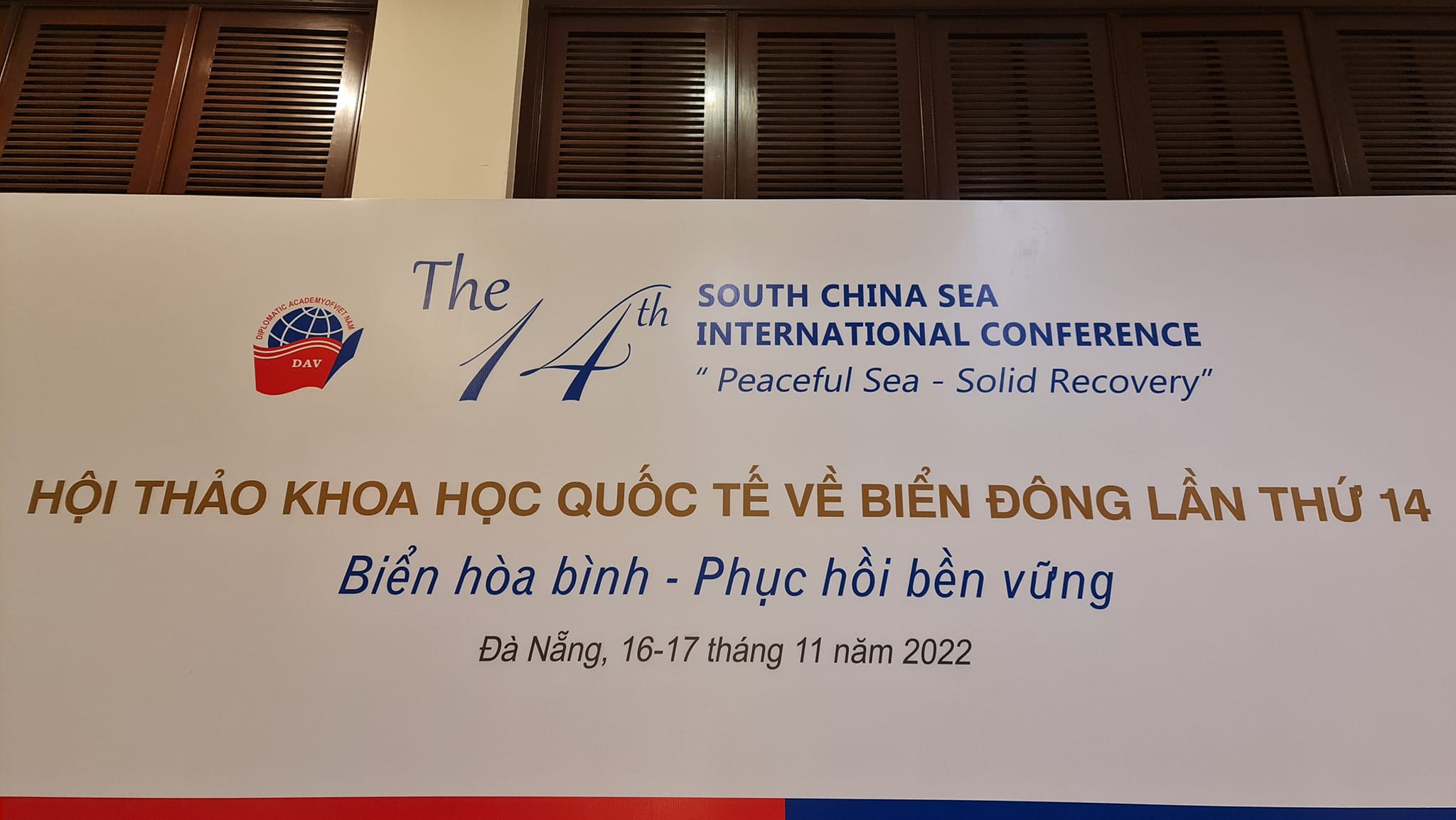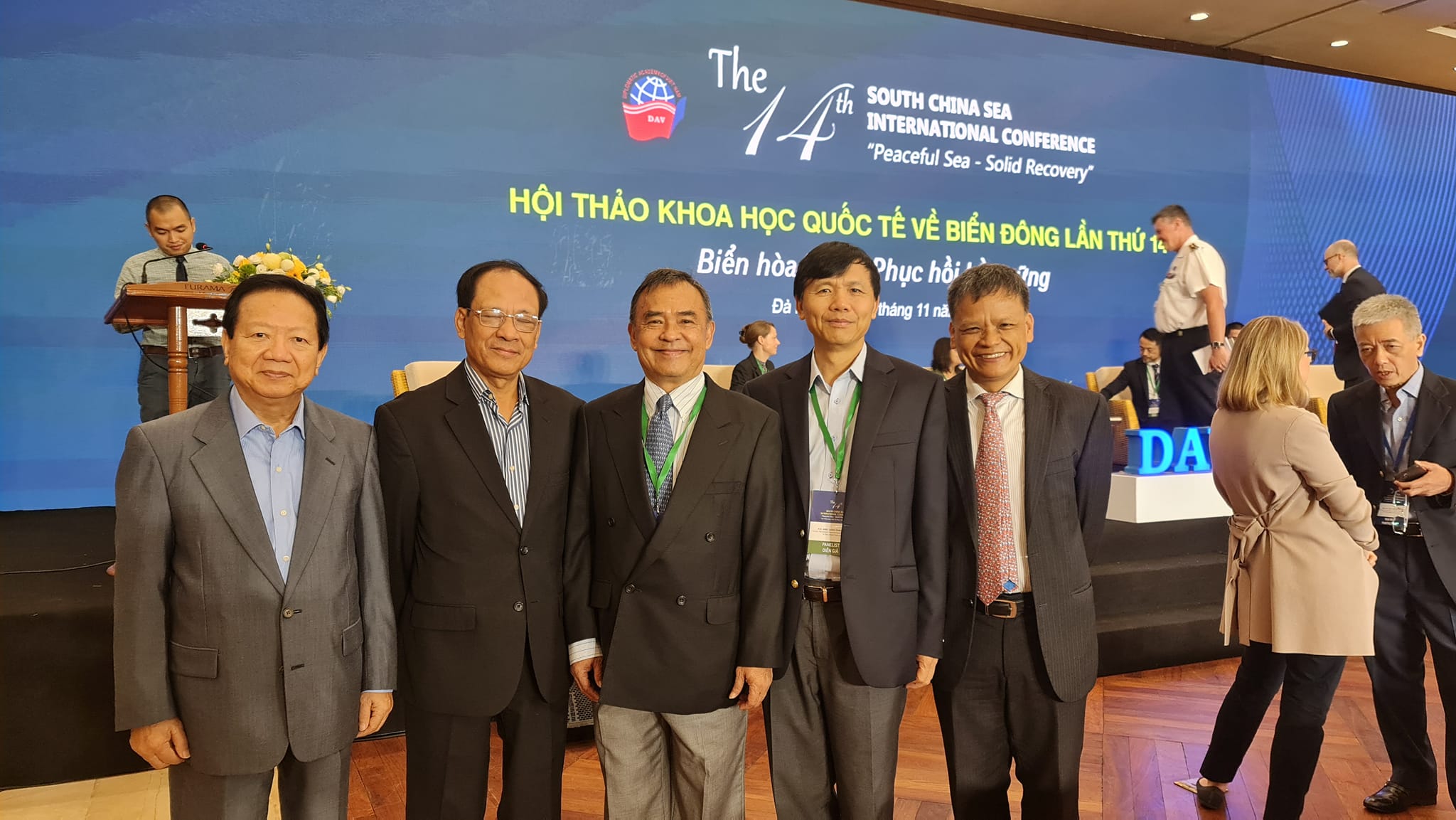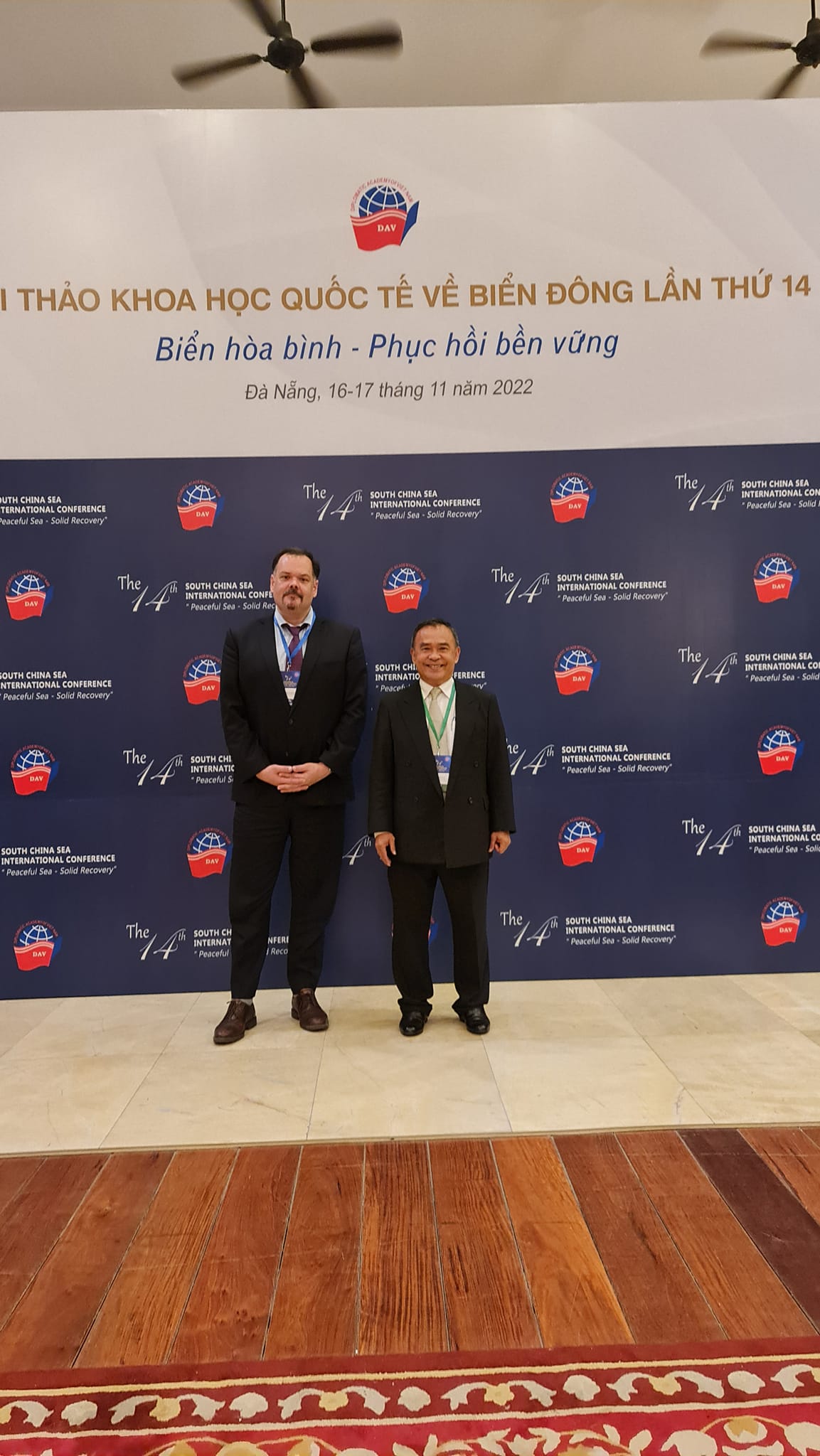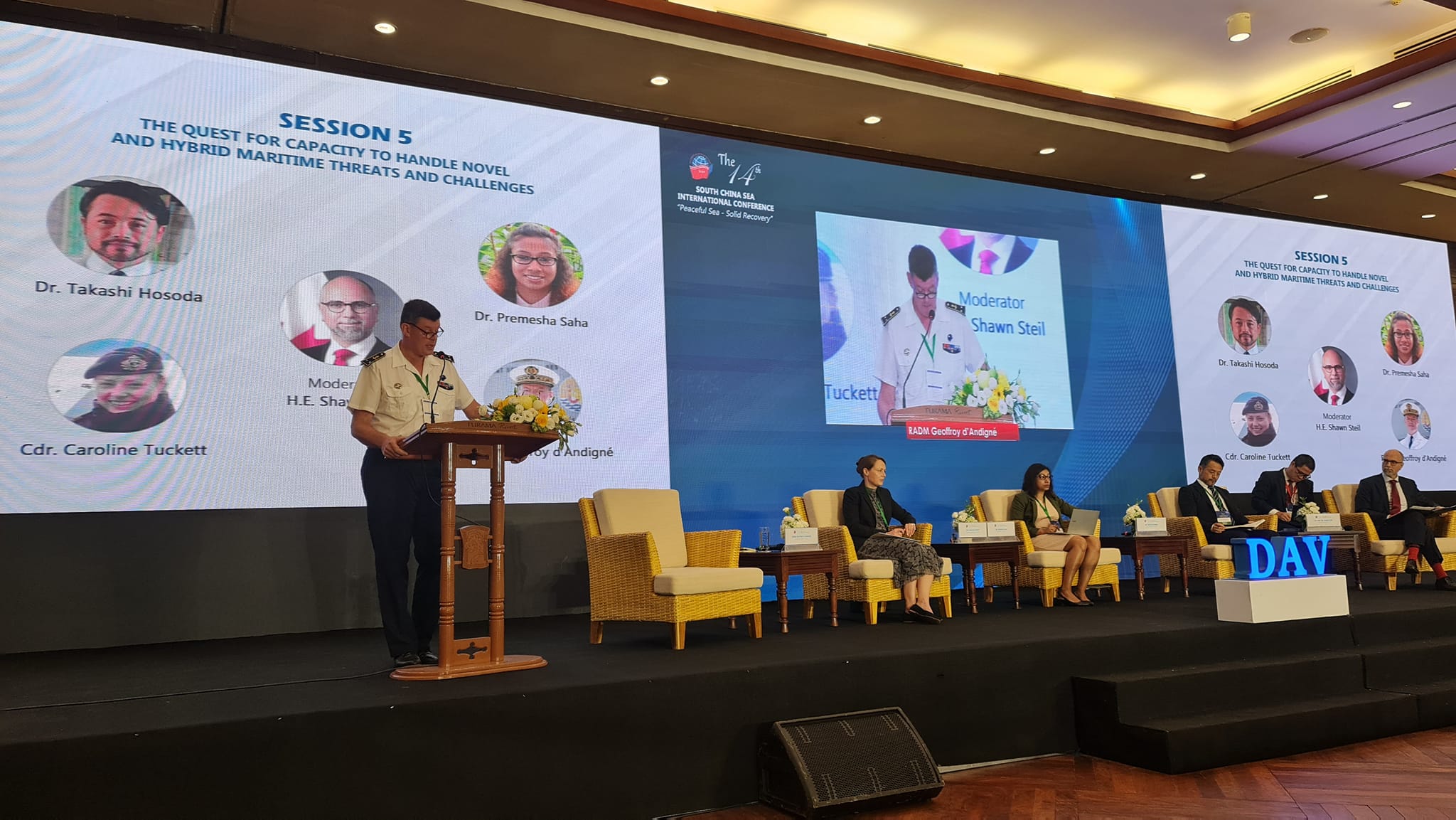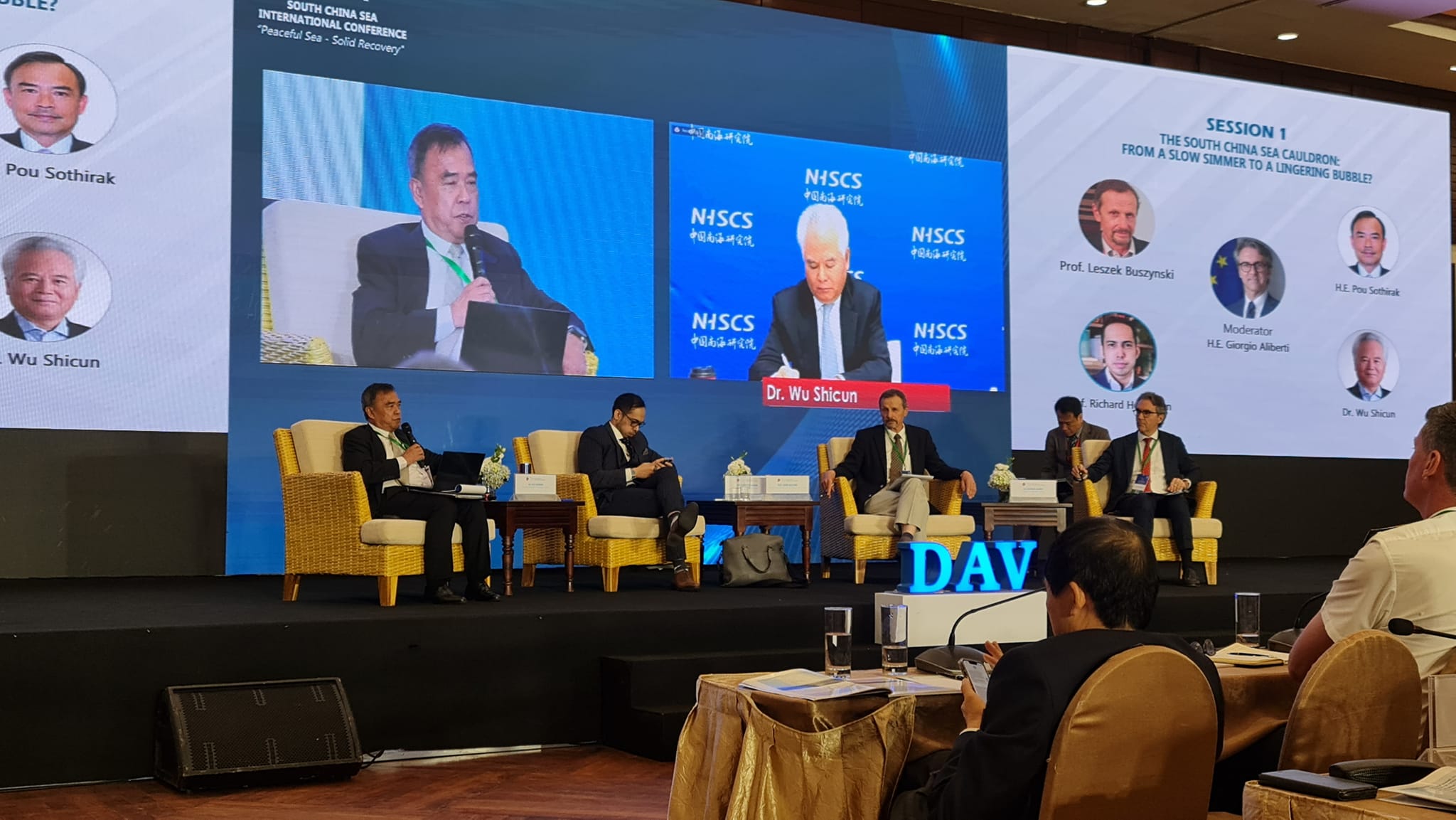Ambassador Pou Sothirak, Executive Director of the Cambodian Institute for Cooperation and Peace was invited to speak at the 14th South China Sea International Conference on the theme of
“Peaceful Sea – Solid Recovery”, organized by the Diplomatic Academy of Vietnam, from 16-17 November 2022, in the beautiful city of Da Nang, Viet Nam.
The title of his presentation is ASEAN Centrality Amidst Indo-Pacific’s Geostrategic Environment.
In addressing the ASEAN’s Relevance amidst fierce competition between US and China in the Indo-Pacific theatre, Amb. Pou Sothirak argued that security and stability in the Asia Pacific region are increasingly affected by strategic competition for influence between the United States and China. It is clear that China’s aspiration to become a dominant global player, as a strategic equal to the U.S. which resists unsympathetically Beijing’s ambition has resulted in an intense rivalry between the two great powers. This competition significantly affects Southeast Asia as they try to avoid the spillover effects regarding their relations with the two superpowers. As such, ASEAN must remain vigilance, creative, and bold so as to manage the power contestation between the two most powerful states – the US and China and address issues that stand in the ‘ASEAN Way’ in improving its relevance and secure its interests in the longer term, while dealing with these challenges and the dynamics of regional and global development. As ASEAN moves ahead into the next half century, the regional bloc needs bolder leadership to ensure ASEAN’s continued relevance, viability, and vitality.
He then discussed how this rivalry continues to affect ASEAN relevance and discusses implications born out of the US and China’s relentless quest for dominance in the Indo-Pacific region. The US and China in recent days competed fiercely against each other in all fields. Their bilateral relationship is arguably the world’s most consequential relationship, impacting the global world and ASEAN included. ASEAN faces multiple implications, involving the different views these two powers see each other through ideological principles, choice of the political system in their respective countries, how the international system is supposed to work in a global, regional, and individual country basis, as well as the believes and values each of the two powers adhere to and not to mention how they conduct their foreign policy between them and bilaterally with individual countries in the Indo-Pacific region. The current international liberal system of which the US had put in place since WWII is now shaken up by China which seems to be dissatisfied with the existing international order, but for different reasons. For Beijing, the current order is ill-equipped to address twenty-first-century challenges on terms with which China can accept. It is this choice of the international order that sparks the relentless confrontation between the two biggest powers and without an appropriate mechanism at hand, conflicts are eminent, affecting every country in the world.
He concluded his remarks with a set of recommendations to enhance ASEAN Centrality to safeguard the region of Southeast Asia from the unyielding influence by external powers. To prevent any unwarranted implications created by the US and China’s tussle for dominance in this region and in a global world and for ASEAN Centrality to transpire as a viable mechanism to balance effectively big powers’ rivalry in the Indo-Pacific. Here are some of his suggestions:
- ASEAN must avoid leaning too deep into China’s economic bounty and the need to continue to open the region for the U.S. military presence in the region to guarantee regional stability and security and to ensure that China’s growing power is indeed peaceful.
- ASEAN needs a bolder strategy to engage both powers smartly but prudently by not circumventing one power against the other. SEAN must be seen as a neutral partner and masterful at balancing big powers’ competition to prevent ASEAN as a whole from taking sides with one power or the other.
- ASEAN must not get entwined with the manner through which the US and China compete with each other while going after their national interest respectively nor provoke them to go against one another on how to resolve hard security issues such as the SCS issues, the Myanmar crisis, the Ukraine war, the Cross-Strait relations.
- On the strategic issues of the Code of Conduct in the South China Sea, ASEAN and China need to focus on resolving challenges for a binding and credible code.
- ASEAN must rely on multilateral cooperation to temper U.S. and China rivalry.
- ASEAN should continue its attempts to engage the US and China through existing frameworks, even if there are limitations in terms of what can be accomplished.
- While engaging China, ASEAN should encourage China to adhere to the promise that its rise is indeed peaceful and beneficial to the region and urge China to work toward collective resolve to find a peaceful solution to the South China Sea issues according to the principles and norms of the international law and on the need to lean on relevant multilateral instruments as often prescribed by the ASEAN Chairman’s Statement.
- When reaching out to the US, ASEAN should do is to let Washington knows that the bloc is at the core of US strategic and economic interests and that Southeast Asia welcomes the US presence in this region as a comforting stabilizing force. The bloc should encourage the US to invest with confidence in ASEAN Centrality to meet Washington’s demanding interest in securing greater strides in leading the Indo-Pacific strategy.
